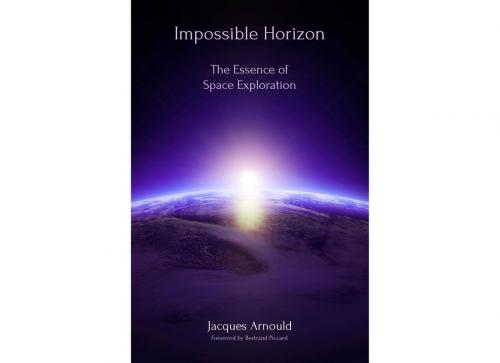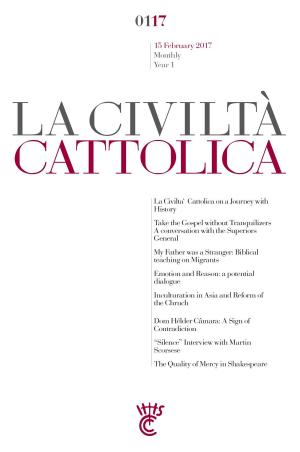Impossible Horizon
The Essence Of Space Exploration
Nonfiction, Science & Nature, Science, Physics, Astrophysics & Space Science| Author: | Jacques Arnould | ISBN: | 9781925309942 |
| Publisher: | ATF (Australia) Ltd | Publication: | September 2, 2017 |
| Imprint: | ATF (Australia) Ltd | Language: | English |
| Author: | Jacques Arnould |
| ISBN: | 9781925309942 |
| Publisher: | ATF (Australia) Ltd |
| Publication: | September 2, 2017 |
| Imprint: | ATF (Australia) Ltd |
| Language: | English |
About the book:
From the introduction: For a long time what we now know as space was inaccessible and off-limits to humans, not because it was at a height which was unattainable without the least astronautical technology or principles, but because of the cosmic and dualistic representation of reality. Reality was seen as a nice, orderly whole, which Greeks specifically named cosmos, within which humans were relegated to the centre to a sort of cesspit of imperfection, alteration, incompleteness and finally death. Around them were crystal spheres which held the planets and stars immutable, eternal and perfect a domain which was completely off-limits to humans, unless they had discarded their carnal envelope, either through a mystical experience or after death.
It took a revolution, what we now call the Copernican Revolution, to shatter the celestial spheres and make them no longer forbidden territory. Galileo was one of the first revolutionaries: through his astronomical observations, he showed the Earth and the Sky were in fact made of the same fabric, the same material, and therefore belonged to the same world. He argued for the unification and equalisation of the universe, its content and its laws.
Then followed Kepler and others. Centuries passed, and human conquered the air, and then space. Their feet touched the surface of the Moon and their wheels
touched the surface of Mars. The Earth and, with it, the entire universe somehow became flat again with no folds, no curves, at least in appearance, to hide any dark corners. ëThe horizon once again retreated out of reach taking with it perhaps the last dreams of exploration. The human imagination does not like horizons which are too flat, too clear; humanity needs to meet resistance, brakes, constraints to stop them in their tracks, to cross them and lead them to a new terrae incognitae, to new unknonwn territories.í
An impossible Horizon, writes Jacques Arnould in this work, but a horizon without which our adventures, our explorations would lose their savor and especially their meaning. We will then understand that even if the goal is never fully achieved, it is the quest that enriches us.í Bertrand Piccard. (Balloonist, aviator and psychiatrist, Bertran Piccard is the first to complete a non-stop balloon flight around the globe, in a balloon named Breitling Orbiter 3.)
About the author:
Jacques Arnould lives in Paris and is a theologian and historian of science. He is the Ethics Advisor for the French Space Agency (CNES) and has written or edited various books in French and in English on space and space exploration. He has previously published in English with ATF Press: God Versus Darwin (2009), and God the Moon and the Astronaut (2015), and in French with ATF France: Dieu, le jour díaprËs (2015).
About the book:
From the introduction: For a long time what we now know as space was inaccessible and off-limits to humans, not because it was at a height which was unattainable without the least astronautical technology or principles, but because of the cosmic and dualistic representation of reality. Reality was seen as a nice, orderly whole, which Greeks specifically named cosmos, within which humans were relegated to the centre to a sort of cesspit of imperfection, alteration, incompleteness and finally death. Around them were crystal spheres which held the planets and stars immutable, eternal and perfect a domain which was completely off-limits to humans, unless they had discarded their carnal envelope, either through a mystical experience or after death.
It took a revolution, what we now call the Copernican Revolution, to shatter the celestial spheres and make them no longer forbidden territory. Galileo was one of the first revolutionaries: through his astronomical observations, he showed the Earth and the Sky were in fact made of the same fabric, the same material, and therefore belonged to the same world. He argued for the unification and equalisation of the universe, its content and its laws.
Then followed Kepler and others. Centuries passed, and human conquered the air, and then space. Their feet touched the surface of the Moon and their wheels
touched the surface of Mars. The Earth and, with it, the entire universe somehow became flat again with no folds, no curves, at least in appearance, to hide any dark corners. ëThe horizon once again retreated out of reach taking with it perhaps the last dreams of exploration. The human imagination does not like horizons which are too flat, too clear; humanity needs to meet resistance, brakes, constraints to stop them in their tracks, to cross them and lead them to a new terrae incognitae, to new unknonwn territories.í
An impossible Horizon, writes Jacques Arnould in this work, but a horizon without which our adventures, our explorations would lose their savor and especially their meaning. We will then understand that even if the goal is never fully achieved, it is the quest that enriches us.í Bertrand Piccard. (Balloonist, aviator and psychiatrist, Bertran Piccard is the first to complete a non-stop balloon flight around the globe, in a balloon named Breitling Orbiter 3.)
About the author:
Jacques Arnould lives in Paris and is a theologian and historian of science. He is the Ethics Advisor for the French Space Agency (CNES) and has written or edited various books in French and in English on space and space exploration. He has previously published in English with ATF Press: God Versus Darwin (2009), and God the Moon and the Astronaut (2015), and in French with ATF France: Dieu, le jour díaprËs (2015).















